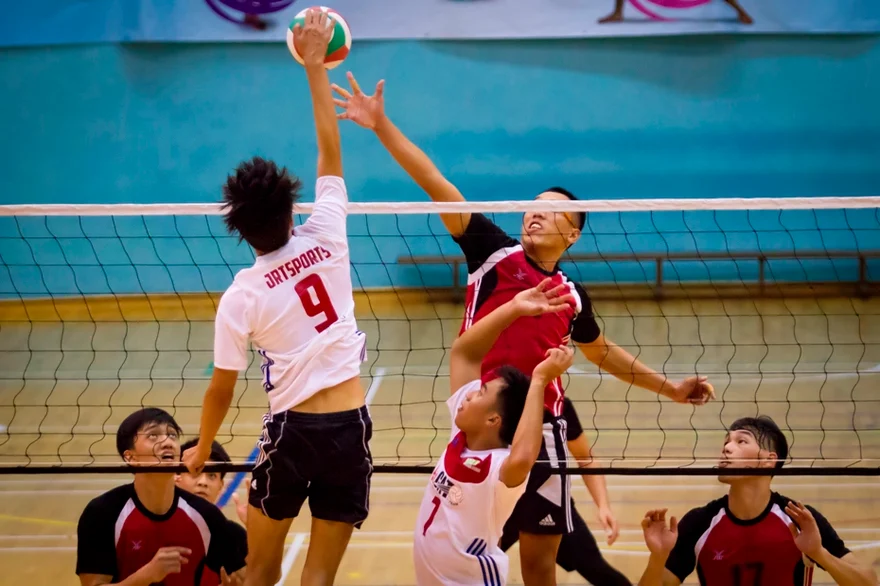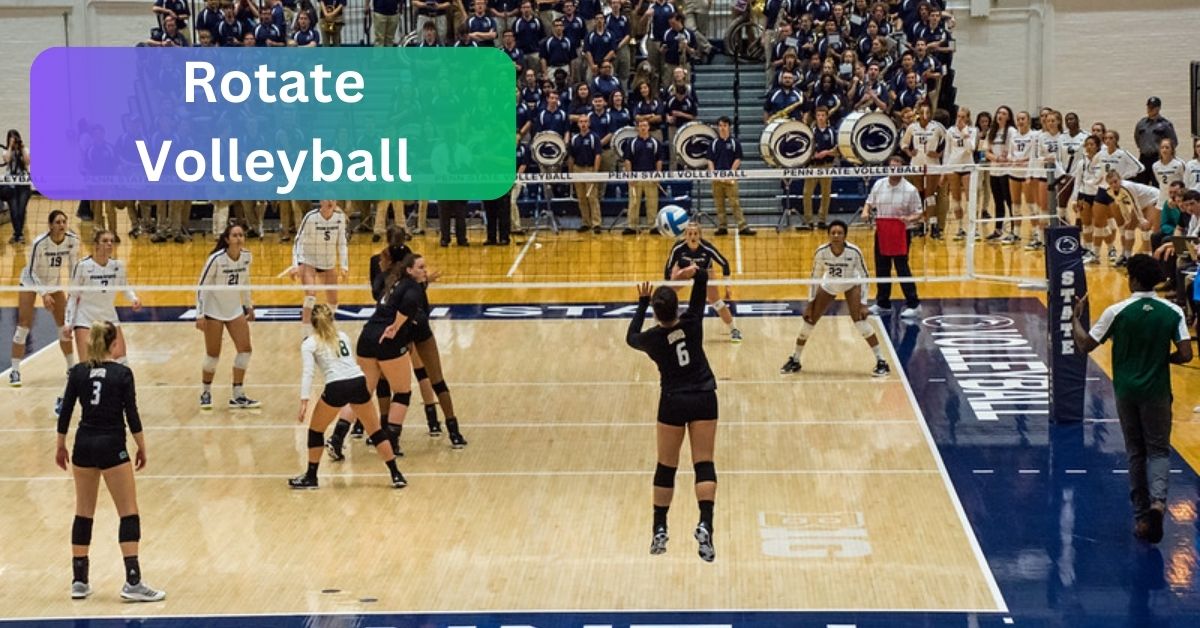One of volleyball’s unique qualities is that its rules require player rotation. Volleyball generates the notion that each player must equally experience various game stages.
Volleyball is a bold, beautiful, and exciting sport that enjoys teamwork, strategy, and the steady dance of rotations. The first thing you must learn about rotations is how to move your body around the volleyball court.
In this comprehensive guide, we’ll delve into the complexities of volleyball rotations, revealing the mystery of when and why players rotate, how rotation orders work, and the various rotation systems that can help you improve your game.
When and Why Do Volleyball Players Rotate? – Here To Know!
Volleyball rotations are not random; they are calculated moves used to distribute players equally across the court. When a team wins the right to serve or scores a point in a rally, they rotate.
This movement ensures that players have a fair chance to contribute in various positions while also keeping the game dynamic and unpredictable.
It also helps to keep players engaged and motivated as they always have the opportunity to contribute to the team’s success. The rotation of players also prevents any one player from becoming too comfortable and complacent in their role.

How Does the Rotation Order Work in Volleyball? – Check Now!
Understanding the rotation order is critical for both players and fans. The rotation order follows a strict pattern, with players moving clockwise.
The player in the right-front position moves to serve, and the others follow suit. This order maximises offensive and defensive capabilities, resulting in court balance.
When your team or the opposing team serves the ball, each player must be in the correct rotational position, watching their correspondence with their front-row or back-row fellow players.
That makes sense to do so. So, when you look at volleyball, are they never in the perfect three-in-front-of-three position when receiving the serve? They appear to be dispersed in the centre. Continue reading. I will respond to this question as soon as possible!
Volleyball Rotations Are Not the Same – shortage Overview!
It is critical to distinguish between rotations and game systems. While rotations determine player positions, systems of play determine the offensive and defensive strategies of the team.
The tactical backbone of a successful volleyball team is the combination of rotations and systems.
The rotations are based on the team’s strategy and can change throughout the game. The rotations can also confuse the opponent and make it difficult for them to anticipate the other team’s moves.
Different Volleyball Rotations – Important Explain!
1. 4-2 Volleyball Rotation
Four attackers and two setters are in the 4-2 rotation. This system provides consistency in setting, allowing the team to maintain a stable offensive rhythm. It’s a popular choice for teams with versatile players capable of both setting and attacking.
2. 6-2 Volleyball Rotation
The 6-2 rotation involves six hitters and two setters. This dynamic system allows for a diverse offensive strategy, as there are always three front-row attackers. It’s ideal for teams with skilled setters who can seamlessly transition between setting and attacking roles.

3. 5-1 Volleyball Rotation
In the 5-1 rotation, there’s one designated setter who remains in the game for the entire rotation. This system provides a stable setting presence, allowing hitters to focus on their primary role. It’s a strategic choice for teams with a standout setter.
4. 5-2 Volleyball Rotation
Similar to the 6-2, the 5-2 rotation involves five hitters and two setters. This hybrid system provides flexibility, with one setter in the front row and another in the back. It’s a versatile option for teams looking to keep opponents guessing.
How to Memorize Volleyball Rotations? – Explore Now!
Remembering rotations is essential for player performance. Visualisation, repetition, and comprehension of the purpose of each rotation can all help with memorisation. Coaches frequently use diagrams and on-court simulations to reinforce these patterns.
I’ve created detailed guidance for each of the significant rotations (linked above), with downloadable PDFs of the rotational diagrams for each system.
Study the motion diagrams until you know why each player stands where they do on the playing surface to follow the rotation rules.
Begin by learning the 6-2 rotation, which is relatively simple with only three different serve receive formations to memorise. The more you play volleyball, the more comfortable you’ll become with these rotations.
Volleyball Overlap Rules – Major Rule Explained it!
Overlap is a common challenge in rotations, particularly during player transitions. Overlapping occurs when a player moves to a position before the serving player contacts the ball. Understanding and adhering to overlap rules is crucial to avoid penalties and maintain a fair game.
- The position 4 player must remain in front of the position 5 player and to the left of the position 3 player.
- The position 5 player must remain behind the position 4 player and to the left of the position 6 player.
- The player in position 6 must remain to the right of 5, to the left of 1, and the back of 3…
- Position 2 must remain in front of 1 and to the right of 3.
- The player in position 3 must remain to the right of 4, to the left of 2, and the front of 6.

Rotate Volleyball Stay in That Position the Whole Time?
Flexibility within rotations is essential. While players start in designated positions, they can move once the ball is in play.
Adapting to the game’s flow, reacting to the opponent’s moves, and supporting teammates are all part of the dynamic nature of volleyball rotations.
if a middle blocker is rotated to the left front position, he or she can move to the center front position after the serve is delivered.
These guidelines guarantee the game is played equally and under the regulations established by the governing body.
FAQs:
1. What Is the Easiest Volleyball Rotation?
The 4-2 rotation is often considered the easiest for teams with players comfortable with setting and attacking.
2. What Happens If You’re Called Out of Rotation?
Being called out of rotation results in a point for the opposing team. Paying attention to the rotation order is crucial to avoid such penalties.
3. Do Pro Volleyball Players Rotate?
Absolutely. Professional players adhere to rotation rules, showcasing the importance of this fundamental game aspect.
4. How Does a Libero Rotate?
Liberos have specific rotation rules, transitioning in and out of the back row to enhance defensive capabilities.
Conclusion:
At the end,
Volleyball is a bold, beautiful, and exciting sport that enjoys teamwork, strategy, and the steady dance of rotations. The first thing you must learn about rotations is how to move your body around the volleyball court.
Read more:













+ There are no comments
Add yours